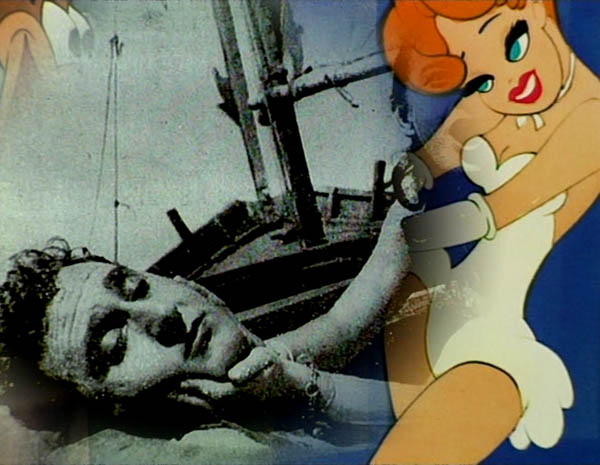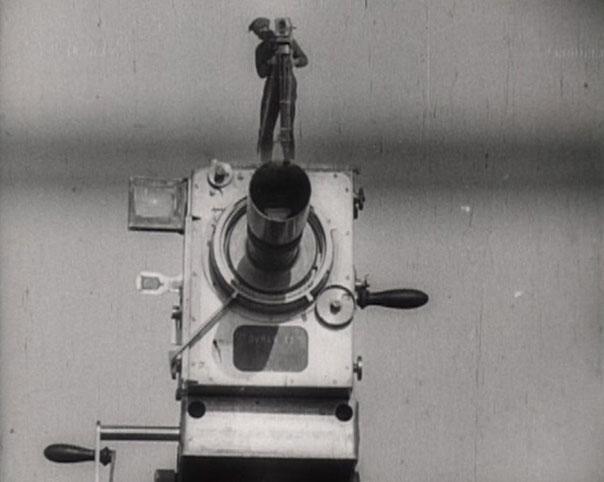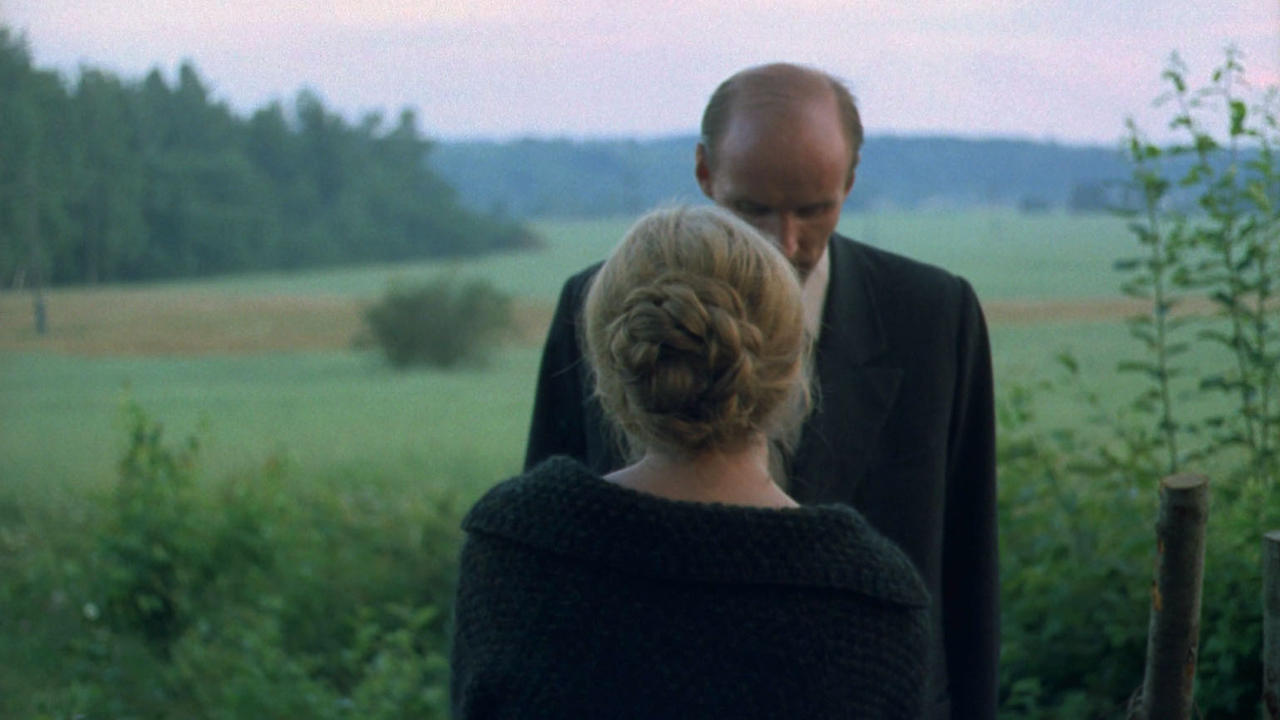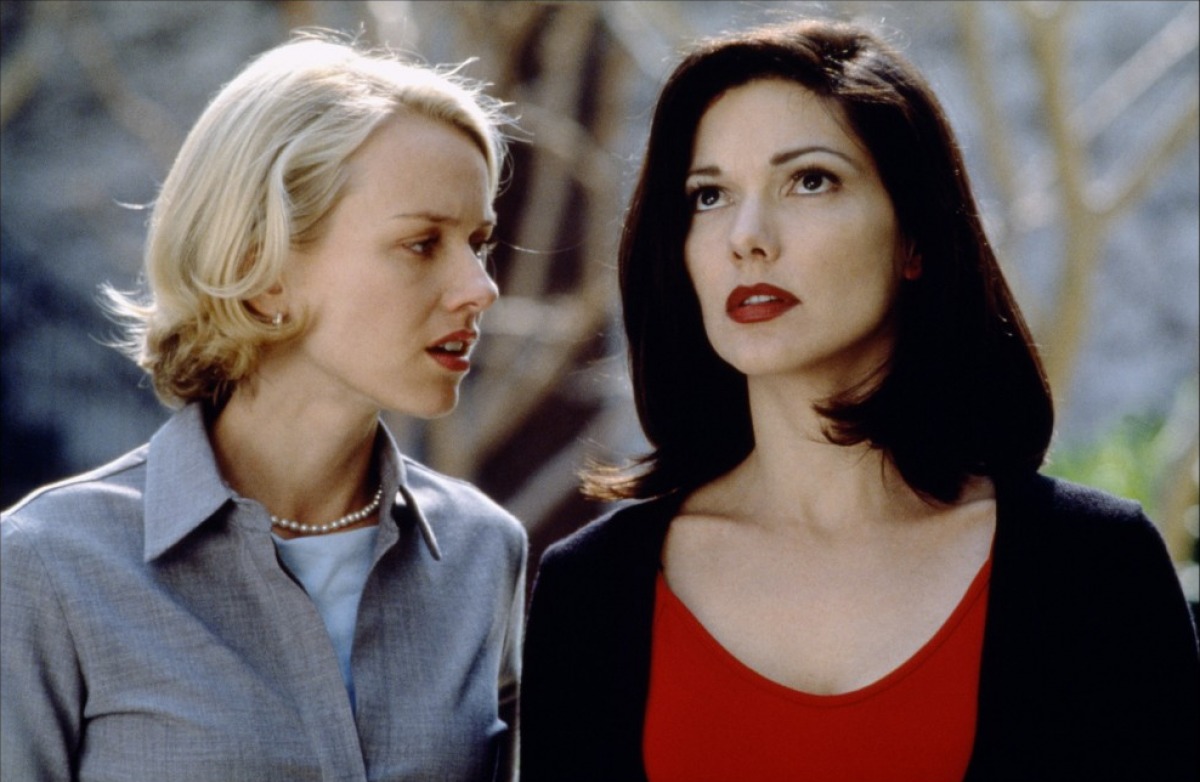6. Histoire(s) du cinéma: How a movie can be constructed

Anyone can tell you that French New Wave auteur Jean-Luc Godard has tried to break the blueprints of mainstream cinema time and time again. Place any of his works here (“Breathless”, “Alphaville”, “Band of Outsiders”, and et cetera), and you can come up with an entire registry of challenged notions. Godard has been an integral part of the cinematic landscape for years, and his biggest ambition has been by his side for a portion of his journey.
The title “Histoire(s) du cinéma” is an enigma alone: it represents the past, present, and future of films and storytelling by being cut into literary fragments. The “film” works similarly, as it is an eight-part series that lasted 10 years. Within it, the present and the past (in cinematic form) are splashed together in what appears to be an edited whirlwind. Transitions splice the preserved remains of old motion pictures, and the ghosts of Hollywood creak through the words splattered on the screen.
Modern performers enact some emotional soliloquies to spring us back to the present, yet they yearn for the golden years. The film is a mosaic that may seem hastily glued together, but in reality, it is the most heart Godard has ever put into any of his celluloid creations. It may feel like a series of lessons, but it is for your own benefit if you have the patience.
7. Man with a Movie Camera: What a documentary can be

When you think of documentaries, you may think of shedding light on political issues, or stories that get introduced. The name Dziga Vertov is often brought up when editing is concerned, but you should start to understand the ways Vertov spliced his films in the best way – each and every cut in “Man with a Movie Camera” can be linked to life. This feature is, to this day, considered a documentary film, despite the fact that there isn’t any sort of narration or loaded commentary.
“Man with a Movie Camera” is most certainly a documentary, because it depicts the everyday realities of people from all over the world. You see cars zip through traffic, sprinters leap over hurdles, and workmen carry on with their careers.
The shots are slowed down, reversed, taken from bizarre angles, and combined together. You can see the world in a whole new way, and that is what’s the most gorgeous about this film. The title simply states that it is a motion picture shot by an ambitious individual and his camera, and it speaks as profoundly as the simple premise it labels.
Deep down, there may be some sort of social statement (perhaps founded on views on the inner machinations of the urban sprawl), but on the very top, this is just a test to see how the world can be envisioned by a filmmaker with a dream. On that note, it may end up being one of the most powerful documentaries of all.
8. The Mirror: How minimalism can strengthen a film

Artistic cinema is getting a better reputation now that the Internet can unite interpretations, stills, opinions, and joys. Andrei Tarkovsky was far from underappreciated when he was making masterpieces, but his slow-burning films also took time to be fully realized many years later. You can pick a number of his films, and they are powerful in different ways.
“The Mirror” is a visual passion project that is unlike a chunk of his other works. While “Stalker” and “Solaris” also stimulate your mind through philosophical reasoning, “The Mirror” is sung entirely from the heart.
It is a series of poems (literary and visual) strung together; these images come from Tarkovsky’s childhood, and they clearly stayed with him throughout the majority of his life. These snippets of imagination are now shared with the rest of the world, and these images do not need much of an introduction.
“The Mirror” gets by with so little, because the little that it has speaks so loudly. Like finding the perfect word to say to a loved one to get them to cry like they never have before, “The Mirror” hits all of the right notes. All of Tarkovsky’s works should be thoroughly studied, but “The Mirror” is essential viewing for anyone who wants to reach spiritual highs with the bare essences of humanity captured on film.
9. Mulholland Drive: How a film could be solved by its viewers

With every film he creates, David Lynch leaves behind a dreamlike mythos that cannot be replicated. He does his civil duty of breaking molds in the majority of his works; “Blue Velvet” turns the 80’s high school dream into an American nightmare, and “Eraserhead” swallows itself alive through the anxieties of everyday living and parenthood. Mulholland Drive is a feat that has not been achieved before and since its inception. It is an aesthetic tsunami that crushes everything within your viewing area.
What is more important, especially where this list is concerned, is that “Mulholland Drive” created a mystery film like no other. The protagonists do not solve the case or fully piece together the pieces of evidence. You, as the interested onlooker, have to decipher “Mulholland Drive”. Lynch even left 10 clues with the early DVD copies of the film that can be discussed and debated to this day. While no theory is the exact same as the other, a good portion of most interpretations are shared by all.
Once you discover the true purpose of the film (of which hides as an avant-garde experiment, but is actually completely plot based deep down), you will finally view “Mulholland Drive” with new eyes; not only does the film now make sense, but almost every single detail (yes, even most of the dialogue) will now be a part of your new discovery. Out of all of the films that have warranted many viewings, no film will be as rewarding on future revisits as “Mulholland Drive”.
10. Persona: How a film can destroy itself

We conclude this list of rule breakers with the strongest game changer of them all. Ingmar Bergman has dabbled with psychological thrillers a number of times, and a few of them (“Cries and Whispers”, “The Silence”) are self aware. No film Bergman created is as self destructive, self conscious, and self imploding as “Persona”.
It is the ultimate cinematic modernist stroke of genius. The classic opening is a jumble of greatly disturbing images that are compiled together just to remove you from your comfort zone. Once you have been shocked out of your state of understanding, you are greeted with a story of a now-mute actress and a nurse that’s been assigned to cure her. You will get sucked into the meandering plot that tricks you time and time again.
Halfway through the film (of which has misled you into thinking you will get somewhere), the motion picture literally splits in half and leads you back to the grotesque images you escaped from the beginning; there is no escape from the depths of hell here. Why does the film split down the middle? Is it to resemble the divided personalities of the two characters (of whom may be one person that is going insane)? It can also be interpreted that, once again, Bergman’s film is trying to alienate you from being connected.
Later on, you can see the “director” on set, the faces of characters merging, scenes being replayed from different perspectives, and more. While you may not be watching the film in your usual way, you will be engulfed by the miasma of confusion, the discomfort of alienation, and the shroud of wonder. “Persona” is as impersonal as a film can be, and yet it is as visceral as cinema can be; it is possible that no film has shattered the very nature of cinema more than “Persona”.
Author Bio: Andreas Babiolakis has a Bachelor’s degree in Cinema Studies, and is currently undergoing his Master’s in Film Preservation. He is stationed in Toronto, where he devotes every year to saving money to celebrate his favourite holiday: TIFF. Catch him @andreasbabs.